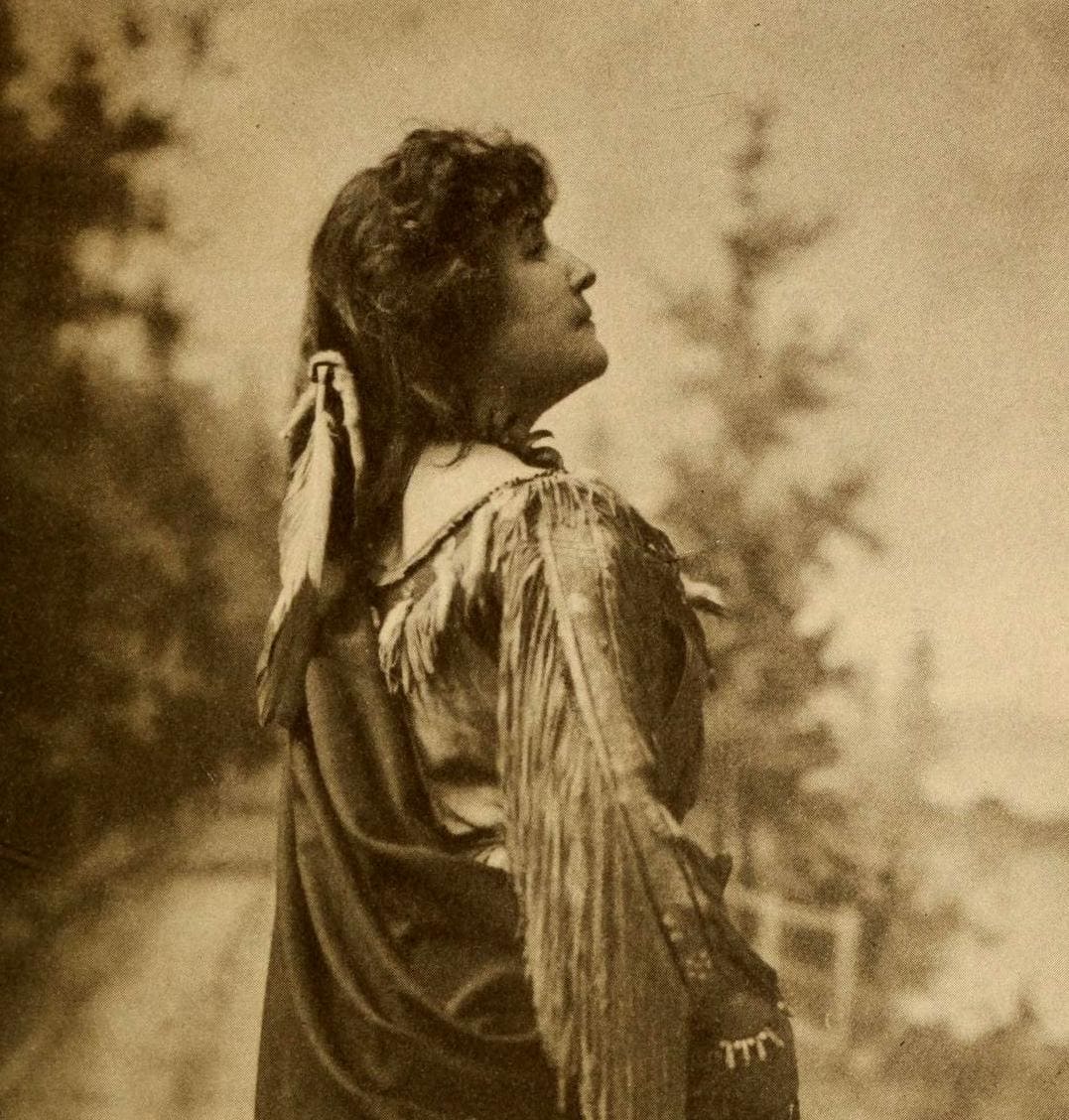
Emily Pauline Johnson, or Pauline Johnson as she was popularly known, was a Canadian aboriginal poet and performer in the late 19th century who transcribed the oral traditions of native storytelling and paved the way for other indigenous women to record their art. Pauline was born on March 10 1861 in Brantford, Ont. and died at the age of 52 on March 7, 1913 in Vancouver B.C. Women’s Post often features women who are doing extraordinary things; however, too often we forget about the women in history who made it possible for women to get that far. In celebration of Women in History month, Women’s Post hopes to showcase the women from our past that have made a difference.
Pauline was born into a high-ranking family and was the youngest daughter of Mohawk Chief George Henry Martin Johnson and British born, Emily Susanna Howells Johnson.
Pauline was half Mohawk and half British, and her parent’s marriage was disliked by many people in her life including both sides of her family. Despite her extended family not supporting Pauline’s upbringing, Pauline’s own parents encouraged acceptance of both her Mohawk and British heritages. This influenced her work greatly later in her life. Her poems focusing primarily on aboriginal themes, yet her poetry also included a distinct European undertone in her prose structure.
Pauline grew up in a wealthy Canadian home in Ontario known as Chiefswood, a 225 acre estate at the Six Nations Reserve. They were visited by a number of famous people in Canadian history because of the high-ranking family’s status, including Inventor Alexander Graham Bell, painter Homer Watson and Lord and Lady Dufferin, the Governor General of Canada and his wife. However, because Johnson’s mother wasn’t aboriginal, Pauline was excluded from many Mohawk events, which is traditionally a matrilineal tribe. Instead, she learned many of the Mohawk traditions from her grandfather John Smoke Johnson and later attributed her talent as a poet to him.
After Johnson’s father died in 1884, she moved with her mother and sister to Brantford into a smaller home. She performed in local theatre shows to support her family and published her first famous poem in 1885 called “A Cry from an Indian Wife”:
“They all are young and beautiful and good;
Curse the war that drinks their harmless blood.
Curse to the fate that brought them from the East
To be chiefs — to make our nation least
that breathes the air of this vast continent.
Still their new rule and council is well meant.
They but forget we Indians owned the land
From Ocean unto ocean; that they stand
Upon a soil that centuries agone
Was our sole kingdom and our right alone.
They never think how they would feel today,
If some great nation came from far away,
Wresting their country from their hapless braves,
Giving what they gave us — but wars and graves.”
The poem was based on the battle of Cut Knife Creek in the Riel Rebellion, which happened the same year she wrote and published the poem. Johnson demonstrated her loyalty to her Mohawk heritage and wrote poems as a plea for native people and the British to find peace. She went on to create many other poems in an attempt to try and reconcile the two sides through her words.
In 1892, Johnson was invited to the Young Men’s Liberal Art Association for an author’s evening — she was the only woman in attendance. She was the only writer asked back for an encore. After the success of this performance, she began touring and performing native poetry in both Canada and the United States, including another one of her famous poems, “The Song My Paddle Sings”. She dressed in traditional costume for a portion of her show, and change into Victorian dress for the remaining half, thus demonstrating her split heritage in her performing art.
Her dual heritage helped her gain notoriety from the British colonials and native clans, yet she was also criticized as being unauthentic and was often called a ‘half-breed’. Her writing exemplifies the pain of being rejected by both the Mohawk people for growing up in privilege with a Caucasian mother, and also cast away by colonials because her father was a chief.
In her book of poems, The Moccasin Maker, which was published posthumously in 1913, she recounts “I dream nightly of the horrors of the white man’s hell. Why did they teach me of it, only to fling me into it?….. They account for it by the fact that I am a Redskin. They seem to have forgotten I am a woman.” Her passionate and direct account of these experiences (though fictional in this piece of literature) as a young Mohawk-British woman in the late 1800s paints a visceral picture of the smouldering anger aboriginal women must have felt in this time. Pauline was both aboriginal and female in a time before the women’s suffrage movement took fire in Canada and Aboriginals were also recognized and respected as equals. Her courage is inspiring.
In 1911, she published Legends of Vancouver, her most well read work and is considered an important piece of written history of aboriginal culture in the city. Johnson died of breast cancer in Vancouver in 1913. Her funeral was the most highly attended ever in the city at that time and her ashes spread in Stanley Park.
Pauline Johnson had a powerful impact on aboriginal women’s art in Canada and was one of the first native women to publish to the extent she did. Johnson led the way for other aboriginal poets to come forth, and her efforts to reconcile native and British rivals was never forgotten. May we all write with the courage that Pauline Johnson displayed, using the power of words to evoke great change in a country and inspire a new definition of Canadian identity.
